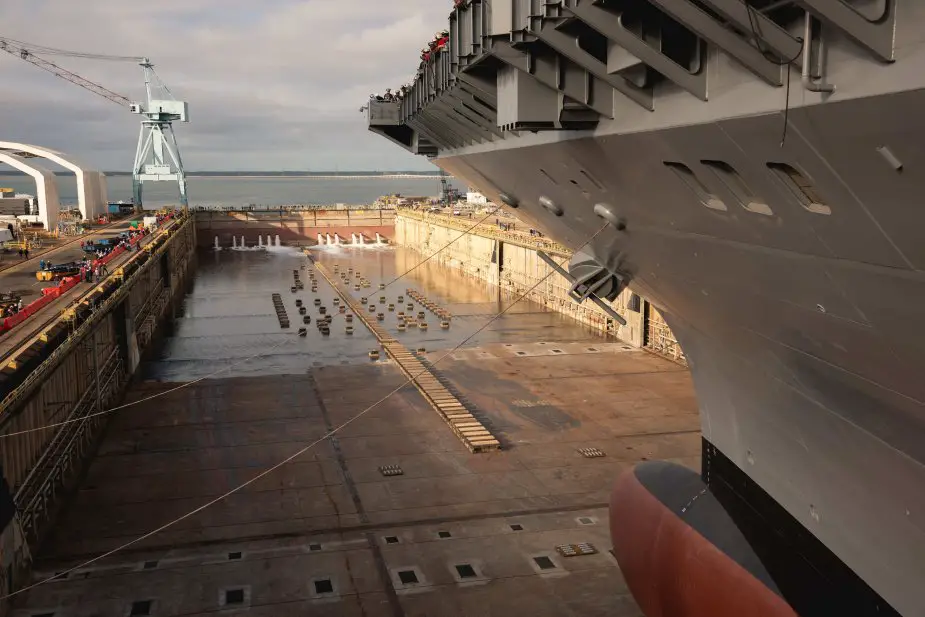Breaking news
HII advanced construction on USS John F. Kennedy aircraft carrier.
According to a press release published by Huntington Ingalls Industries on August 2, 2021, the firm announced that it is making significant progress in the compartment and systems construction of the aircraft carrier John F. Kennedy (CVN 79).
Follow Navy Recognition on Google News at this link
 Aircraft carrier USS John F. Kennedy CVN-79 (Picture source: Huntington Ingalls Industries)
Aircraft carrier USS John F. Kennedy CVN-79 (Picture source: Huntington Ingalls Industries)
Newport News Shipbuilding division recently eclipsed the 20% mark on compartment completion, turning over to the ship’s crew more than 500 of the total 2,615 spaces. It also has installed more than 8 million feet of cable — or more than 1,500 miles — of the approximately 10.5 million feet of cable on Kennedy.
The most recently completed spaces include berthing, machinery and electrical. This allows sailors assigned to the pre-commissioning unit to continue training on the ship while final outfitting and testing progresses.
Kennedy is more than 80% complete overall, and is scheduled to be delivered to the Navy in 2024.
The USS John F. Kennedy (CVN-79) is the second Gerald R. Ford-class aircraft carrier being built for the United States Navy. The ship was launched on October 29, 2019, and christened on December 7, 2019. This type of aircraft carrier will replace USS Enterprise (CVN-65) and eventually the United States Navy's existing Nimitz-class carriers.
The biggest visible difference from earlier supercarriers will be the more aft location of the island (superstructure). The Gerald R. Ford-class carriers are to have a reduced whole-life cost due in part to reduced crew size. These ships are intended to sustain 160 sorties per day for 30-plus days, with a surge capability of 270 sorties per day.
The Gerald R. Ford-class aircraft carrier is equipped with two newly-designed reactors and has 250 percent more electrical capacity than previous carriers. The improvements will allow the ship to load weapons and launch aircraft faster than ever before. She features a new nuclear power plant, a redesigned island, electromagnetic catapults, improved weapons movement, an enhanced flight deck capable of increased aircraft sortie rates, and growth margin for future technologies. Each Ford-class ship will operate with a smaller crew than a Nimitz-class carrier and will provide $4 billion in total ownership cost savings for the U.S. Navy.
The Gerald R. Ford-class aircraft carrier will be able to carry up to 90 aircraft, including the F-35 Joint Strike Fighter, F / A-18E / F Super Hornet, E-2D Advanced Hawkeye, EA-18G Growler electronic attack aircraft, MH-60R / S helicopters, as well as unmanned air and combat vehicles.





























